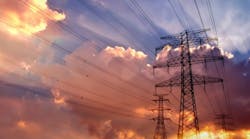My good friend John Kumm always remembers me and invites me to the Power Delivery Design Conference hosted by Power Engineers. This is a really unique event in that has bunches of Power Engineers and an equal bunch of Power Engineer customers. Maybe it is also unique in that it is held in Sun Valley, Idaho. I can actually get my wife Alice to come with me to enjoy this winter wonderland as we walk around the trails in our rented snowshoes. Yes, I used to ski, but the knees recommended that I scale back.
This year the keynote speaker was Wade Smith with American Electric Power. He is the SVP of Grid Development. AEP is the biggest transmission owner in the United States with around 10% of all the transmission in the country. AEP intends to allocate $9 billion to its transmission business, and it believes it has a great opportunity and responsibility to build the energy grid of the future.
So what will the grid of future look like?
States Smith, ”The grid of the future has to be resilient, and it has to meet customers’ wants and needs. We can’t expect to meet today’s customers’ needs with a system built in 1914. The future grid will have to integrate many loads, sources, and smart devices. We need a strong communication network, and we need better models of the distribution system. We also need more interoperability and more data visualization.”
So what is AEP doing on the transmission system? Right now they are deploying live-line work methods on high-voltage lines. They are also using drop-in control modules. They are monitoring the condition of all their EHV transformers, with the use of this technology being spread to cover the rest of the fleet. Because of these monitoring systems, Smith says that “AEP has been able to take action to address situations that otherwise would have resulted in at least three catastrophic failures on large transformers.”
States Smith, “To build the energy grid of the future, AEP must continue to innovate. Examples include the BOLD transmission line design concept demonstrated in Indiana and the rapid deployment skid- mounted substation.”
Smith summarized with the following:
“What we do matters. What we do is really important. If we don’t have electricity, health care doesn’t happen, commerce doesn’t happen. We don’t get food and water. We make a difference in the world every day.
“We need to talk more about opportunities to get young people interested in our industry today. It will take a couple of decades to build out the grid, so we have time on our side.
“But, we need to get our message out there and recruit the best and brightest. They will want to have a hand in integrating renewables, relieving congestion, supporting economic development and improving reliability. Now is the time to build the energy grid of the future. “


